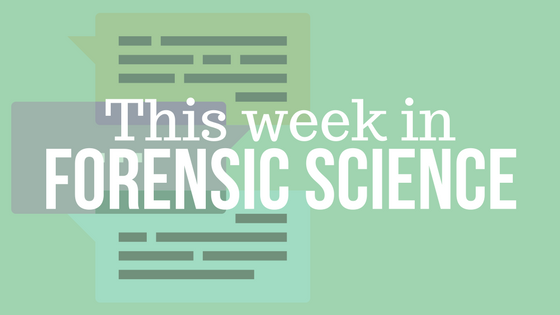No one has hours to scour the papers to keep up with the latest news, so we’ve curated the top news stories in the field of Forensic Science for this week. Here’s what you need to know to get out the door!
Silent Witnesses: Why Do Females Make Up Most of Those Investigating Crime Using Science? (The Sydney Morning Herald – 11/11/2017)
In the US, 80 per cent of students in forensic courses are female. Shari Forbes, director of the Australian Facility for Taphonomic Experimental Research (AFTER) – known as Australia’s first “body farm”, where decomposition is studied – says the figure at the University of Technology Sydney is similar. And at NSW Health Pathology the workplace is also about 80 per cent female.
Unknown Soldier: 1 Forensic Anthropologist, 27,000 Canadians Missing In Action (CBC News – 11/11/2017)
Even with help from modern technology, Canadian casualty ID program’s task is enormous
Creating DNA from Scratch in a Lab (Fox 5 – 11/14/2017)
Imagine wheat resistant to climate change or trees that purify water supplies. That is not too far-fetched. It took 10 years, but Dr. Jef Boeke and scientists in 11 other labs on four continents finally figured out a way to create DNA from scratch. And it starts with yeast.
Dr Gillian Tully Reappointed in Key Role for Setting Standards for Forensic Science (Gov.UK – 11/14/2017)
The Home Office has today (14 November) announced the reappointment of Dr Gillian Tully as Forensic Science Regulator.
X-Rays Used in Artwork Analysis Detect Body Fluids, Gunshot Residue, Dutch Team Says (Forensic Magazine – 11/15/2017)
A technology called scanning macro x-ray fluorescence spectroscopy, or MA-XRF, has made impressive breakthroughs in scanning famous artworks, penetrating beneath the layers of paint to find the first strokes and sketches of masters such as Rembrandt van Rijn.
Facial Recognition System that Accounts for Racial Differences Performs Better, Researchers Say (Forensic Magazine – 11/15/2017)
A facial recognition system that recognizes racial differences will yield more accurate results than a “one-size-fits-all” model, researchers from the University of Surrey report in the journal Pattern Recognition. The team found that a 3-D morphing face model trained to specifically recognize black, white and Asian faces in 2-D images performed better identifying faces at different angles and in different lighting scenarios than previous models.
No ‘Lost Tribes’ or Aliens: What Ancient DNA Reveals About American Prehistory (The Guardian – 11/15/2017)
New genetics research settles questions about the peoples of Newfoundland and Labrador – and helps highlight what genetics can’t tell us
In a First, Scientists Edit DNA Inside a Patient’s Body (Press Herald – 11/15/2017)
Scientists for the first time have tried editing a gene inside the body in a bold attempt to permanently change a person’s DNA to cure a disease.
Forensic Specialist Dixie Peters on Skeletons and the Search for Missing Persons (Brisbane Times – 11/16/2017)
As the technical leader for the Missing Persons Unit at the University of North Texas, she is a specialist in mitochondrial DNA testing, utilising it to help solve missing persons cases across the US.
WOULD YOU LIKE TO SEE MORE ARTICLES LIKE THIS? SUBSCRIBE TO THE ISHI BLOG BELOW!
SUBSCRIBE NOW!


